Xin Qiao
RGB Guided ToF Imaging System: A Survey of Deep Learning-based Methods
May 16, 2024Abstract:Integrating an RGB camera into a ToF imaging system has become a significant technique for perceiving the real world. The RGB guided ToF imaging system is crucial to several applications, including face anti-spoofing, saliency detection, and trajectory prediction. Depending on the distance of the working range, the implementation schemes of the RGB guided ToF imaging systems are different. Specifically, ToF sensors with a uniform field of illumination, which can output dense depth but have low resolution, are typically used for close-range measurements. In contrast, LiDARs, which emit laser pulses and can only capture sparse depth, are usually employed for long-range detection. In the two cases, depth quality improvement for RGB guided ToF imaging corresponds to two sub-tasks: guided depth super-resolution and guided depth completion. In light of the recent significant boost to the field provided by deep learning, this paper comprehensively reviews the works related to RGB guided ToF imaging, including network structures, learning strategies, evaluation metrics, benchmark datasets, and objective functions. Besides, we present quantitative comparisons of state-of-the-art methods on widely used benchmark datasets. Finally, we discuss future trends and the challenges in real applications for further research.
Depth Super-Resolution from Explicit and Implicit High-Frequency Features
Mar 16, 2023



Abstract:We propose a novel multi-stage depth super-resolution network, which progressively reconstructs high-resolution depth maps from explicit and implicit high-frequency features. The former are extracted by an efficient transformer processing both local and global contexts, while the latter are obtained by projecting color images into the frequency domain. Both are combined together with depth features by means of a fusion strategy within a multi-stage and multi-scale framework. Experiments on the main benchmarks, such as NYUv2, Middlebury, DIML and RGBDD, show that our approach outperforms existing methods by a large margin (~20% on NYUv2 and DIML against the contemporary work DADA, with 16x upsampling), establishing a new state-of-the-art in the guided depth super-resolution task.
Rethinking Blur Synthesis for Deep Real-World Image Deblurring
Sep 28, 2022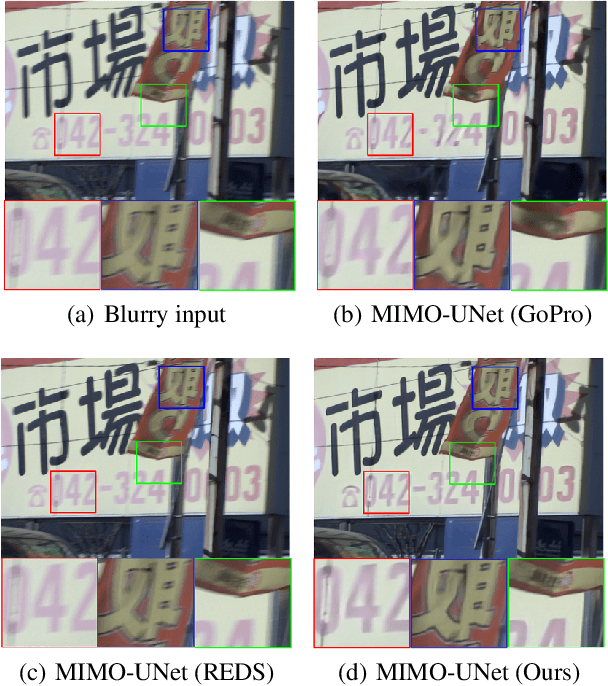
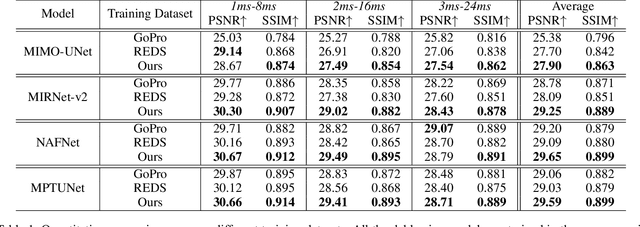


Abstract:In this paper, we examine the problem of real-world image deblurring and take into account two key factors for improving the performance of the deep image deblurring model, namely, training data synthesis and network architecture design. Deblurring models trained on existing synthetic datasets perform poorly on real blurry images due to domain shift. To reduce the domain gap between synthetic and real domains, we propose a novel realistic blur synthesis pipeline to simulate the camera imaging process. As a result of our proposed synthesis method, existing deblurring models could be made more robust to handle real-world blur. Furthermore, we develop an effective deblurring model that captures non-local dependencies and local context in the feature domain simultaneously. Specifically, we introduce the multi-path transformer module to UNet architecture for enriched multi-scale features learning. A comprehensive experiment on three real-world datasets shows that the proposed deblurring model performs better than state-of-the-art methods.
Flexible Image Denoising with Multi-layer Conditional Feature Modulation
Jun 24, 2020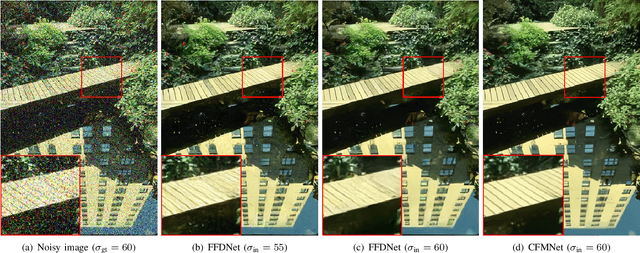

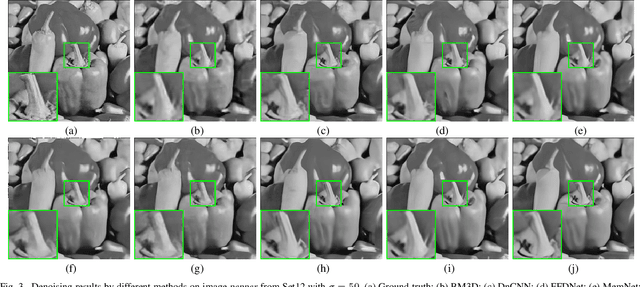
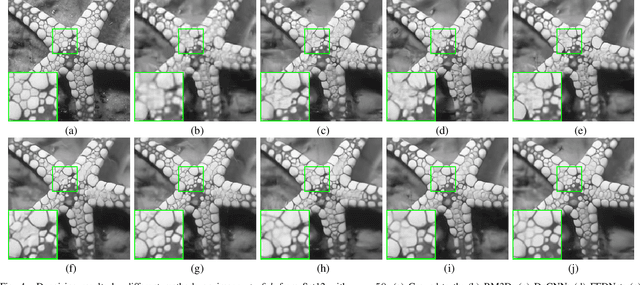
Abstract:For flexible non-blind image denoising, existing deep networks usually take both noisy image and noise level map as the input to handle various noise levels with a single model. However, in this kind of solution, the noise variance (i.e., noise level) is only deployed to modulate the first layer of convolution feature with channel-wise shifting, which is limited in balancing noise removal and detail preservation. In this paper, we present a novel flexible image enoising network (CFMNet) by equipping an U-Net backbone with multi-layer conditional feature modulation (CFM) modules. In comparison to channel-wise shifting only in the first layer, CFMNet can make better use of noise level information by deploying multiple layers of CFM. Moreover, each CFM module takes onvolutional features from both noisy image and noise level map as input for better trade-off between noise removal and detail preservation. Experimental results show that our CFMNet is effective in exploiting noise level information for flexible non-blind denoising, and performs favorably against the existing deep image denoising methods in terms of both quantitative metrics and visual quality.
 Add to Chrome
Add to Chrome Add to Firefox
Add to Firefox Add to Edge
Add to Edge